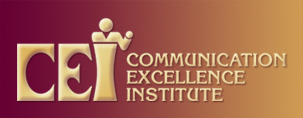What do we mean by an Elevator Speech? It’s a short description of who you are and what you do, presented to a key person in the time it takes to go by elevator from the lobby to the top floor of a mid-rise building. In networking organizations, members introduce themselves in “elevator speeches” of about 30 seconds. Ideally, an “elevator speech” has attention-getting information that encourages others to want to know more about your business or institution.
Writing your elevator speech
Here are the basic elements of an elevator speech for introducing yourself. Just fill in the blanks. (You might want to print out this format for convenience.) This format is especially helpful when you introduce yourself publicly in professional or civic organizations, where you want to be brief, but memorable.
Greeting:______________________________________________________________
(“Hi,” “Hello,” “Good morning/afternoon/evening”)
Your name: ____________________________________________________________
(“I’m…”/“My name is…”)
Title & organization: _____________________________________________________
(“I’m a labor & employment attorney with Smart & Verbal, LLP”/“I’m President of Awesome College”/“My company is Vital Services Corporation”)
What you do (including your Value Proposition):_______________________________
(“We come up with new strategies to take care of old workplace problems”/”We educate the next generation to use the technology of the future”/”We take the hassle out of finding the best healthcare professionals”)
Your Value Proposition is what makes you special. What distinguishes you from other similar organizations?
A “you-oriented,” catchy benefit statement:__________________________________
(“I’m an attorney who will work just as hard to keep you out of court as to defend you in it!”/“So, if you want your graduates to advance as fast as the technology, take a look at Awesome!!”/“If you’re tired of pouring time and resources into dead-end executive searches, let’s talk.”)
The Benefit Statement makes the Value Proposition (see above) practical.
Your name & organization again:___________________________________________
(“Joe Sellers, Trident Realty.”)
Rehearsing your elevator speech
Now the time has come to turn your great writing into talk.
There are two ways to rehearse your elevator speech. First, just speak it out loud by yourself. Notice how the words flow. If you get tongue-tied, then rewrite the phrases that you get hung up on. Do it over and over until it comes out sounding natural. Second, think about being videotaped. If you haven’t been videotaped much, you may want to have someone tape you who can give you professional feedback on your performance.
When Jan and I coach people on their elevator speeches, we make sure they observe four things, which we represent with our RSVP acronym.
R – Really hit key words and phrases. Determine which words in each sentence of your speech you want to make the biggest impact. Take the sentence above. I’d hit the keywords and phrases printed in bold: “I’m an attorney who will work just as hard to keep you out of court as to defend you in it!”
S – Speak in short sentences and phrases. If you’ve written your speech in short sentences like the samples above, you’ve got half the battle won. Most people write in long sentences, but speak in short ones (about 7-10 words each). The reason for this is that in writing, you can always go back to the beginning of a long sentence if you miss an idea, but in spoken long sentences it’s easy to lose a speaker’s initial ideas and not possible to recapture them. Also short sentences flow easier and are easier to phrase.
V – Increase your Volume. Most people speak quite a bit softer than they think they do. In our consulting, Jan and I ask many of our clients to speak twice to three times louder than normal. The reaction from softer-speaking people is the sensation of shouting, but when they hear themselves on tape, they agree they sound better. It’s not that we can’t hear them. It’s that they don’t project as much energy when they speak softly.
P – Pause. Be sure to separate your sentences clearly. Speakers will tend to run the sentences of their elevator speeches together, giving the impression of hurriedness and a desire to just get it over with!
Finally, there’s one last tip. End each sentence with a downward inflection. Most people introduce themselves with the kind of inflection we use at the end of a question. If I introduce myself, saying “Hi. I’m Neal Larsen Palmer” with an upward phrasing on “Palmer,” as though a question mark followed my name, it will make you wonder “Are you sure you’re Neal Larsen Palmer?” Downward inflection at the end of sentences makes your statements more definitive and persuasive.
Finally, let’s take a look at some…
Do’s and Don’ts of an Effective Elevator Speech
Do…
- Excite curiosity by putting together an attention-getting sound bite.
- “Hook” them with your clear and brief Value Proposition (what makes you special).
- If appropriate, start your “What I/we do” phrase with “I/We help ...”
- Use verb-based, benefit-oriented phrases.
- Introduce yourself as a “solution-provider.”
- Use definitive downward inflection for every clause.
- Talk through a smile when delivering your elevator speech.
- Maintain solid, warm eye contact.
- Gesture outwardly toward the other person or audience.
- Have multiple versions of your elevator speech for different situations.
- Always stand. Give your elevator speech sitting, only if everyone else has.
- Change your speech over time to keep it fresh. Don’t let them think “so what?”
Don’t…
You’ve spent a career lifetime honing your skills and building your knowledge base. So DO craft a dynamite elevator speech, and DON’T miss a single opportunity to use it.
Yours in good communication,
Jan & Neal Palmer |



